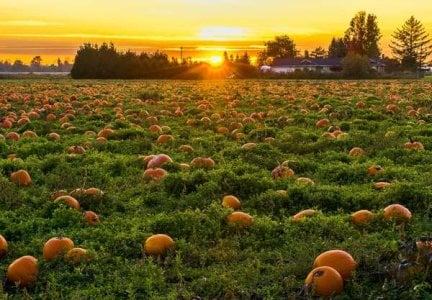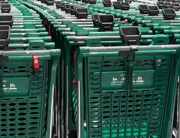Pumpkin Shock: How the dwindling supply is going to hit your wallet HARD!
By
Danielle F.
- Replies 12
As the leaves turn golden and the air chills, Australians across the country look forward to the comfort of hearty stews and the festive glow of jack-o'-lanterns. But this year, the humble pumpkin, a beloved staple in our kitchens, is at the heart of a supply and pricing conundrum that's set to make a dent in the wallets of shoppers.
In South Australia, a region known for its robust agriculture, pumpkin growers are facing a paradoxical situation. Despite the cost of production dropping to as low as 60 cents a kilogram, the price of pumpkins on supermarket shelves has soared to around $4 per kilogram. This price hike is leaving many consumers bewildered and budget-conscious seniors feeling the pinch.
The reason behind this price surge is multifaceted. On one hand, South Australian farmers, grappling with low prices for red wine grapes due to a global oversupply, have turned to pumpkins as a quick 'cash crop.' This shift was expected to bring good returns, but the reality has been less than fruitful for growers like Steve Brauer, who has seen his returns plummet as more farmers flood the market with their pumpkin harvests.
'The market is way oversupplied this year,' Mr. Brauer lamented. 'Last year wasn't good, but I still got 80 cents [a kilogram]. This year for most of the season [I got paid] 60 cents [per kilogram]. It's nearly 40 cents before you can actually make a return because you've got to cover the cost of fertiliser, water, and electricity.'
While South Australia's Riverland is dotted with pumpkins among the vineyards and roadside stalls, the nation's largest pumpkin production still resides in Queensland, accounting for almost half of the crop. Yet, even with an increase in local production, the supply has been patchy, and the impact of flooding and heavy rain on the east coast has further strained availability.
Supermarkets like Woolworths and Coles have cited these adverse weather conditions as the primary reason for the reduced supply and subsequent price increase. A Woolworths spokesperson acknowledged 'higher than usual demand' for varieties such as butternut and Kent pumpkins, while Coles pointed to seasonal growing conditions affecting availability.
For consumers, this means digging deeper into their pockets for a vegetable that is often a key ingredient in their meals. The situation is particularly tough for seniors on fixed incomes, who may have to reconsider their grocery lists or find alternative ingredients to substitute for pumpkin.
But it's not all doom and gloom. The versatility and durability of pumpkins offer a silver lining. Kevin Myers, who runs the Murray River Giant Pumpkin and Sunflower Competition, notes that butternuts are not only the most forgiving and tastiest variety but also a true 'cash crop.'
'If you store them properly, they'll last quite a few months,' Mr. Myers explained. 'So instead of everybody sending them off at one time and making the price crash, they can be slowly fed to the market.'
This storage capability means that savvy shoppers can buy pumpkins when prices are lower and keep them for extended periods, ensuring a steady supply for their favorite recipes.
As we navigate this patchy pumpkin supply, it's essential to stay informed about market trends and to explore alternative sources, such as local farmers' markets or community-supported agriculture, where prices may be more stable and the produce fresher.

Members, have you noticed the rising cost of pumpkins at your local supermarket? How are you adapting your shopping habits or recipes in light of these changes? Share your experiences and tips in the comments below – your insights could be a great help to fellow readers trying to manage their budgets during these fluctuating times.
In South Australia, a region known for its robust agriculture, pumpkin growers are facing a paradoxical situation. Despite the cost of production dropping to as low as 60 cents a kilogram, the price of pumpkins on supermarket shelves has soared to around $4 per kilogram. This price hike is leaving many consumers bewildered and budget-conscious seniors feeling the pinch.
The reason behind this price surge is multifaceted. On one hand, South Australian farmers, grappling with low prices for red wine grapes due to a global oversupply, have turned to pumpkins as a quick 'cash crop.' This shift was expected to bring good returns, but the reality has been less than fruitful for growers like Steve Brauer, who has seen his returns plummet as more farmers flood the market with their pumpkin harvests.
'The market is way oversupplied this year,' Mr. Brauer lamented. 'Last year wasn't good, but I still got 80 cents [a kilogram]. This year for most of the season [I got paid] 60 cents [per kilogram]. It's nearly 40 cents before you can actually make a return because you've got to cover the cost of fertiliser, water, and electricity.'
While South Australia's Riverland is dotted with pumpkins among the vineyards and roadside stalls, the nation's largest pumpkin production still resides in Queensland, accounting for almost half of the crop. Yet, even with an increase in local production, the supply has been patchy, and the impact of flooding and heavy rain on the east coast has further strained availability.
Supermarkets like Woolworths and Coles have cited these adverse weather conditions as the primary reason for the reduced supply and subsequent price increase. A Woolworths spokesperson acknowledged 'higher than usual demand' for varieties such as butternut and Kent pumpkins, while Coles pointed to seasonal growing conditions affecting availability.
For consumers, this means digging deeper into their pockets for a vegetable that is often a key ingredient in their meals. The situation is particularly tough for seniors on fixed incomes, who may have to reconsider their grocery lists or find alternative ingredients to substitute for pumpkin.
But it's not all doom and gloom. The versatility and durability of pumpkins offer a silver lining. Kevin Myers, who runs the Murray River Giant Pumpkin and Sunflower Competition, notes that butternuts are not only the most forgiving and tastiest variety but also a true 'cash crop.'
'If you store them properly, they'll last quite a few months,' Mr. Myers explained. 'So instead of everybody sending them off at one time and making the price crash, they can be slowly fed to the market.'
This storage capability means that savvy shoppers can buy pumpkins when prices are lower and keep them for extended periods, ensuring a steady supply for their favorite recipes.
As we navigate this patchy pumpkin supply, it's essential to stay informed about market trends and to explore alternative sources, such as local farmers' markets or community-supported agriculture, where prices may be more stable and the produce fresher.
Key Takeaways
- South Australian pumpkin growers are facing low prices for their produce due to a surplus in pumpkins, with some being paid as little as 60 cents per kilogram.
- The cost of purchasing pumpkins in big supermarkets has risen to about $4 per kilogram, influenced by flooding and heavy rain on the east coast affecting supply.
- Despite more SA farmers planting pumpkins, consumers are not benefiting from the lower grower prices, experiencing higher prices at checkout instead.
- While wholesale prices have remained relatively stable, retail prices have increased, and supermarkets are reporting higher than usual demand for pumpkins and are paying suppliers more than last winter.








